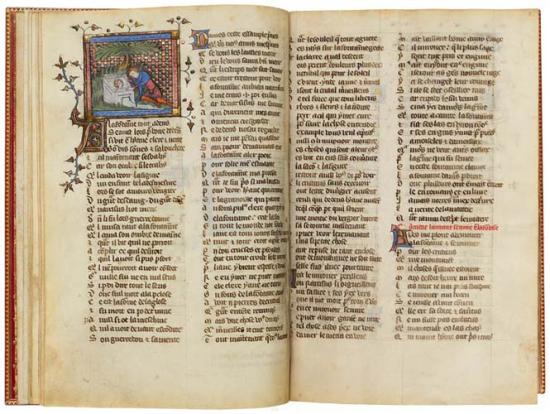Narcissus Admires Himself

Romance of the Rose, in French
Purchased by Pierpont Morgan, 1904
Narcissus admires his handsome reflection in a fountain. His hair is fashionably wavy and features a dorlott: a curl or bang centered above the forehead. His cote hardy is tight on the bodice with a loose, gored skirt with a dagged hem. A purse, called a gipser, dangles from his thin belt. His blue chaperon, embroidered with a decorative hem, hangs foppishly loose around his shoulders. He wears orange hose and elegant shoes with open frets.
Fashion Revolution
The "Fashion Revolution" began around 1330 with the invention of the set-in sleeve. Earlier garments were T-shaped, with sleeves of a piece with the body or sewn on a flat seam. The new technique (still in use today) cut sleeves with rounded tops and gathered them along basted threads into armholes in the bodice. This new tailoring, combined with the use of multiple buttons, made possible a snugly fitted bodice and tight sleeves. While providing more freedom of movement, the new garment for men—the cote hardy—also revealed the shapes of the wearer's torso and arms. The "Fashion Revolution" gave birth to men's modern dress, creating an outfit that was sharply differentiated from the dress of women.
Women's fashions, however, were also affected. Tighter bodices and sleeves became popular, as did exposed necks and shoulders. The sides of the outer garment, the surcot, now sometimes featured seductively large, peek-a-boo openings.
Men—and some women—turned the chaperon (a hood with an attached cape and tail) into a fashion accessory that lasted over a hundred years.